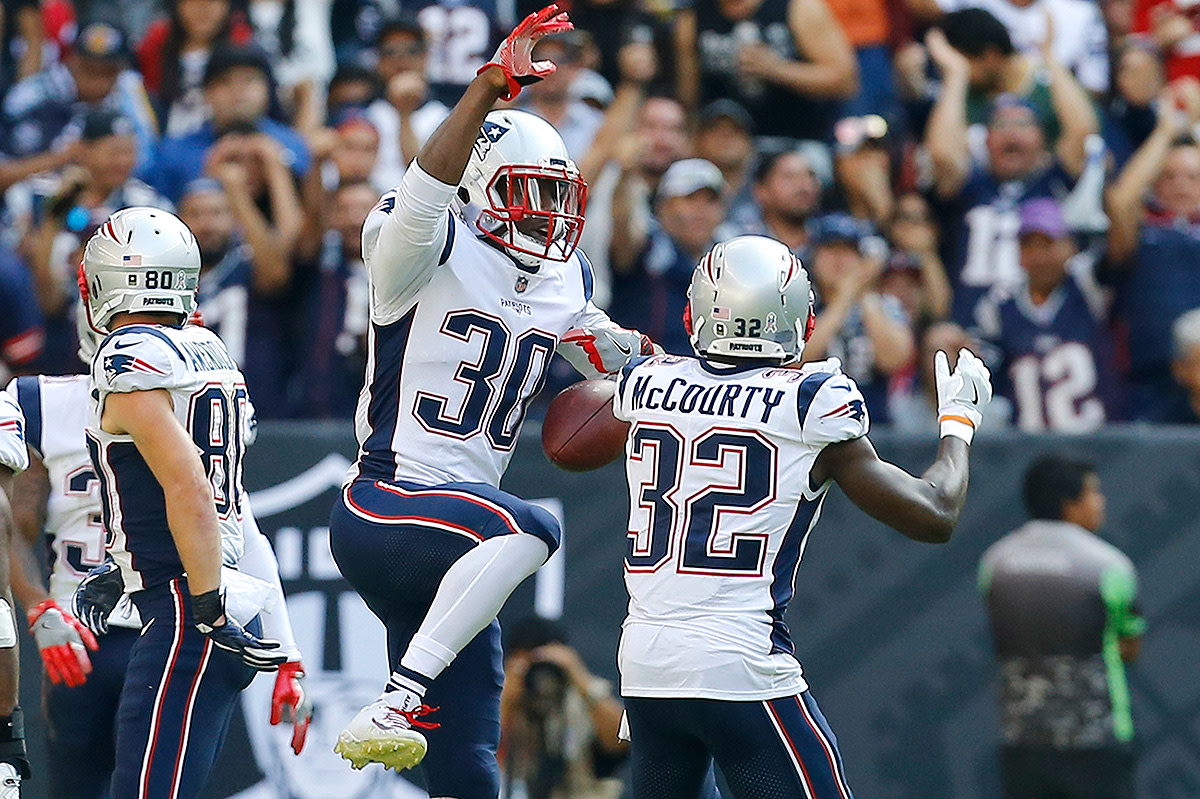For Philadelphia and New England, the Super Bowl Could Come Down to Versatile Safeties

Philadelphia and New England boast two of the NFL’s best-schemed offenses. A few things they have in common: dynamic, multifaceted Pro Bowl tight ends (Patriots’ Rob Gronkowski and Eagles’ Zach Ertz); running backs who contribute in the passing game (Patriots’ James White and Rex Burkhead and Eagles’ Jay Ajayi and Corey Clement); and play-callers who understand the value of formational diversity and misdirection designs.
Both offenses can be difficult for a defense to handle, and unless that defense has a litany of sagacious veterans up front, in the middle and back deep (something no team has had since perhaps the 2004 Patriots), the best course is to find a handful of athletic, hybrid pieces who can align and match up anywhere on the field. In today’s NFL, that means versatile safeties, and not coincidentally, both Super Bowl teams run three-deep at that position.
The Eagles have maybe football’s best all-around safety in Malcolm Jenkins—an alert, steady ball-stopper who lines up both deep and shallow, as well as in the slot and at linebacker. Drafted in 2009 as a first-round corner by the Saints, Jenkins can contest with certain possession receivers out wide and in the slot, and certainly with most tight ends. (And perhaps ALL tight ends; we’ll find out Sunday when he draws the Rob Gronkowski assignment.)
Behind Jenkins is Corey Graham, another former corner who plays in Philadelphia’s increasingly more frequent three-safety, three-corner dime package, as well as in its three-safety, two-corner “big nickel.” When Graham’s name comes up, Eagles secondary coach Cory Undlin throws up his hands and shakes his head, as if to say that Graham’s impact is too big for words. “It’s a huge plus when you have a comfort level with players where, no matter who they are lined up against [be it a tight end, back or receiver] they have a chance,” Undlin says. “Corey provides that as a former corner.”
Graham and Jenkins’s flexibility together presents not only an answer for most offensive wrinkles, but also the ability for defensive coordinator Jim Schwartz to disguise his man concepts as zone and, even rarer, the ability to disguise some of his zone concepts as man. Behind Graham and Jenkins is Rodney McLeod, one of the game’s rangier centerfielders and a threatening blitzer. Schwartz isn’t a big pressure guy, but he dials up two or three unpredictable all-out blitzes a game. (An offense should be on high alert for a blitz whenever McLeod aligns in the box.)

For New England, the centerfielder is fifth-year pro Duron Harmon, who plays in dime and big-nickel packages that defensive coordinator Matt Patricia, like Schwartz, employs regularly. In front of Harmon is Devin McCourty—a former first-round corner like Jenkins. If McCourty isn’t serving as the shallow middle-field robber in New England’s man coverages, he’s covering the tight end one-on-one, and he’s more than capable of sparring with a Pro Bowler like Ertz. Ertz will also battle Patrick Chung, a ninth-year pro who has blossomed into a tremendous utility player over the last four years. Chung’s aggression against the run allows the Patriots to employ their more athletic “big nickel” package against several different offensive looks. It also can help put New England’s defense in the schematic driver’s seat.
“Anytime you have flexibility with players, you have more options,” says Patriots cornerbacks coach Josh Boyer. “If certain guys can stay on the field against various personnel packages, you can present more looks to the offense.”
More so than ever, professional football is a form of violent, live-action chess. With versatile safeties, both Super Bowl 52 defenses essentially play with three queens on the board.
